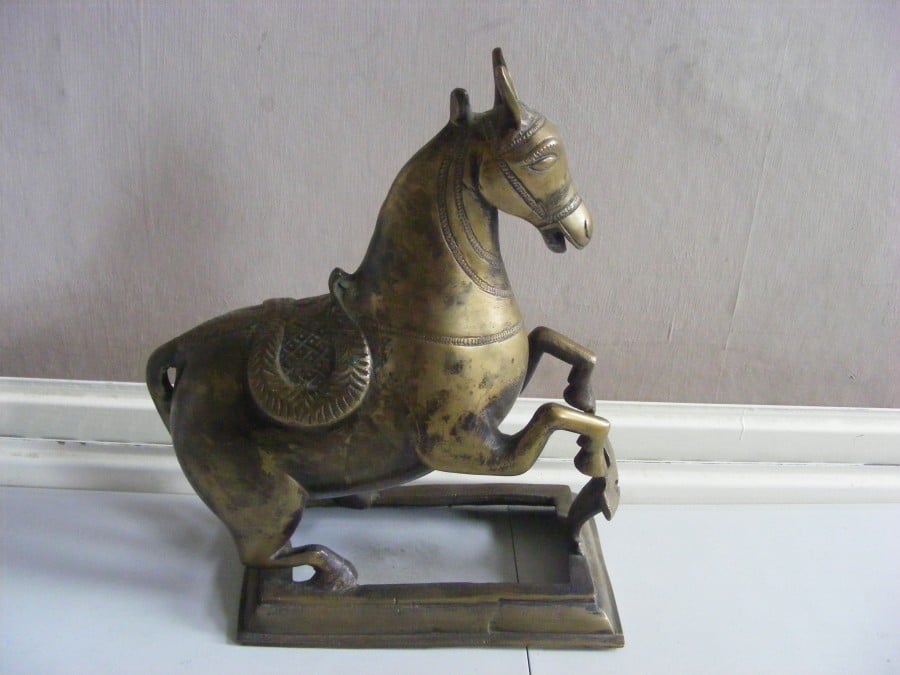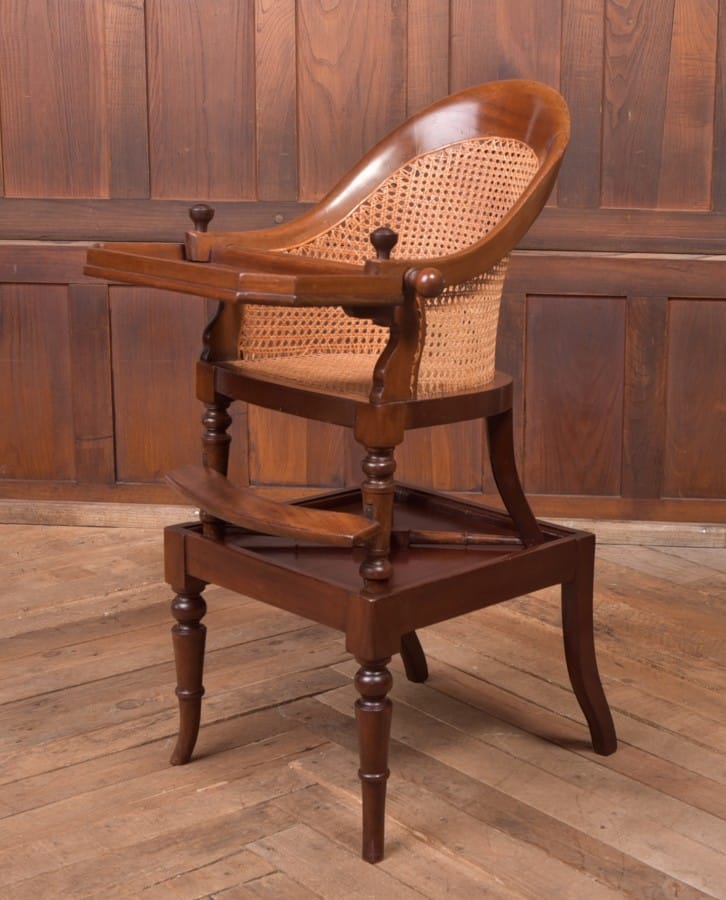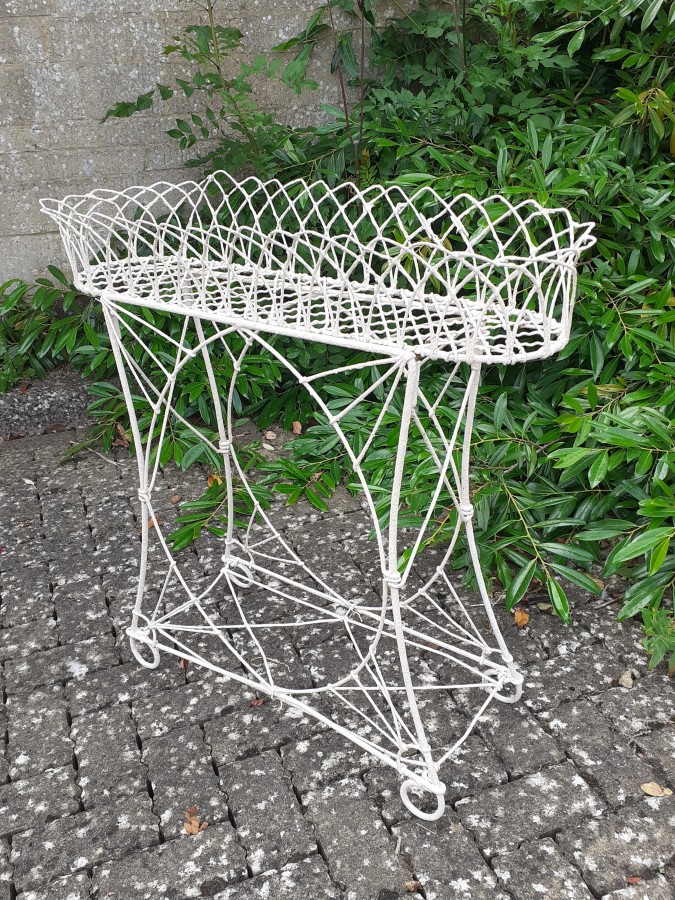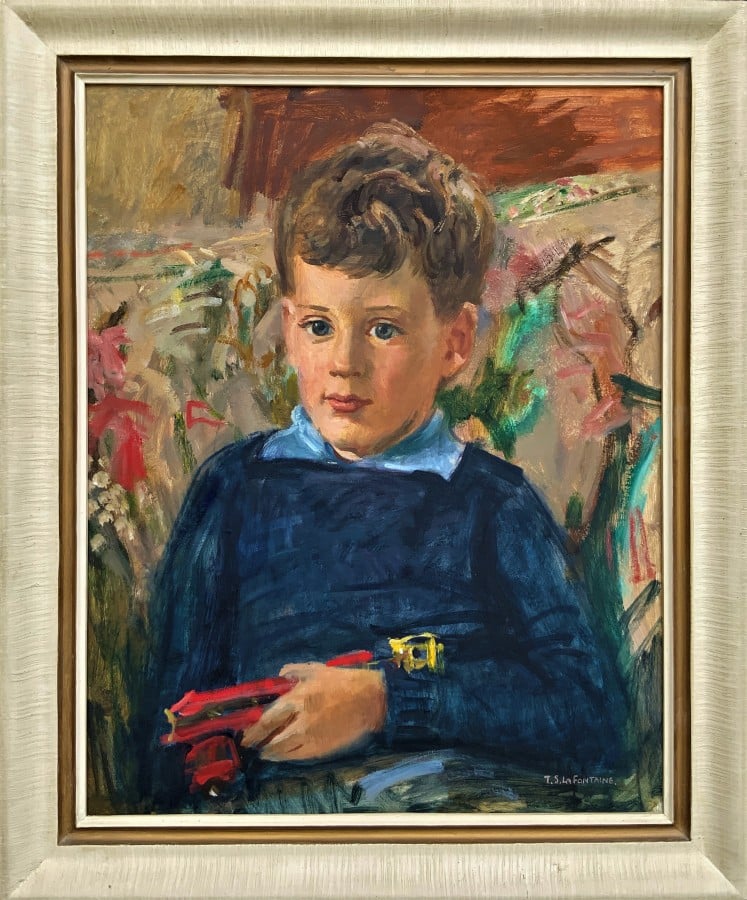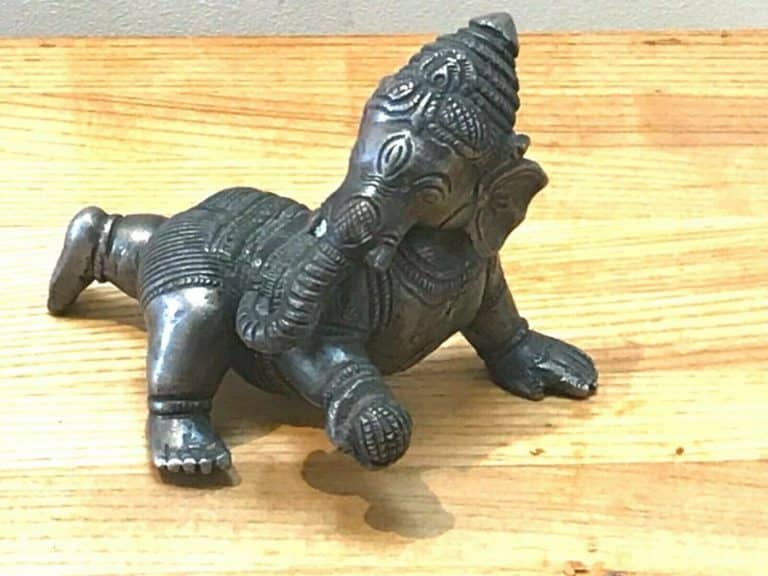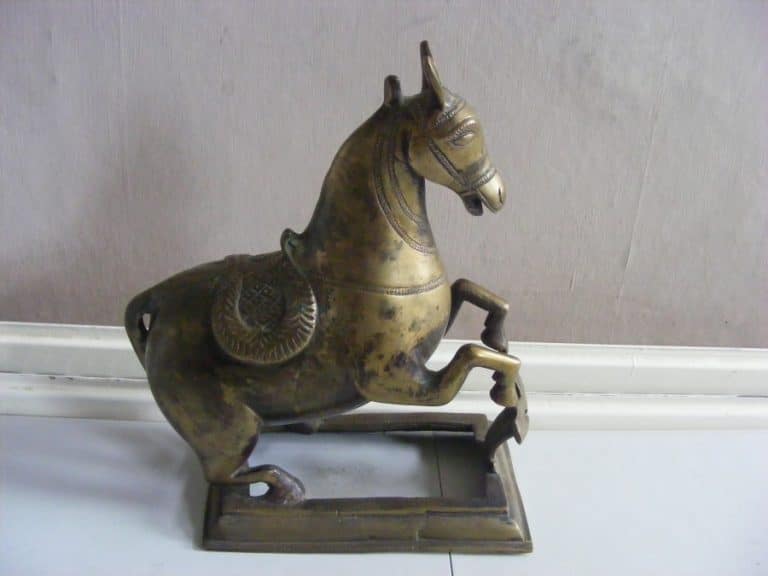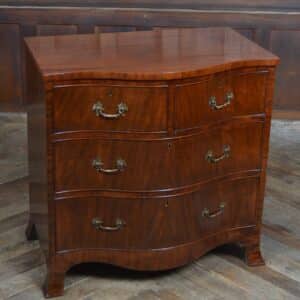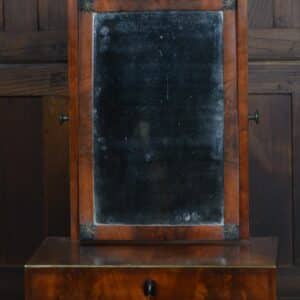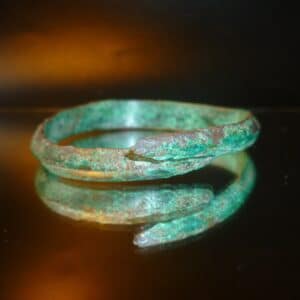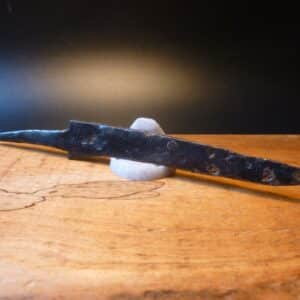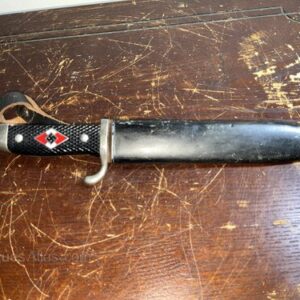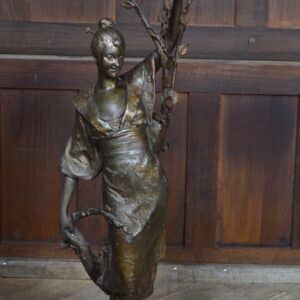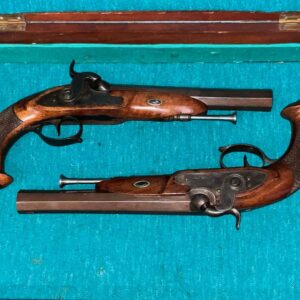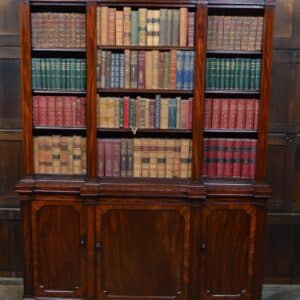A magnificent, mahogany and caned child’s Bergere high chair. The rounded Bergere chair has a footrest and an in-eating tray having a rail that slides through and locks in place to keep a child seated, raised on turned front legs and saber back legs united by a turned cross stretcher. The solid mahogany table that the chair sits upon is raised on legs that match the chair beautifully. The child’s chair and table are easy to take apart and put back together and are both held together by an original bolt.
Great little piece with gorgeous colour and patina to the wood and will look stunning in any corner of any room.
A Victorian wirework plant stand circa 1890. Could be used in the garden, in a conservatory or on a balcony to create a beautiful floral display.
Height – 31″ Length – 31″ Depth – 10″
This is an exceptional quality original Vintage Oil on Canvas Portrait Painting depicting an affluent and smartly dressed young boy who is sitting on a floral-patterned sofa whilst holding a red vintage Toy Fire Engine in one hand.
Painted during the 1950s-1960s by Royal Academy Listed artist ”Thomas Sherwood La Fontaine” (1915-2007).
La Fontaine was an animal painter and draughtsman in black-and-white. He studied at Regent Street Polytechnic School of Art during the 1940s-1950s. His teachers, whilst there, included ‘Harry Watson’ and ‘Stuart Tresilian’.
Further exhibitions were held at the City and Guilds of London Art School, and the Royal Academy, to name but a few.
La Fontaine lived in Malmesbury, Wiltshire, for many years, and passed in 2007.
A stunning piece in every respect, with superb attention to detail, and signed by the artist lower-right corner.
Absolutely stunning looks beautiful the workmanship is beyond reproach solid cast condition is excellent length of 11 cm height 8 cm depth 8 cm.
Rare Mughal Cast Brass Rearing Horse 18th Century India
This is a beautifully modelled antique cast brass horse in the rearing pose, with open mouth and is saddled. Of realistic form, the head is depicted in a slightly smaller size in proportion to the body and is part of a group of similar equestrian figures.
This type of Mughal cast brass horse originates from the Persian Abbasid Dynasty and there is a 10th century example in the State Hermitage Museum, St. Petersburg (illustrated in “Heavenly Art, Earthly Beauty – The Arts of Islam”, Rotterdam 2000).

